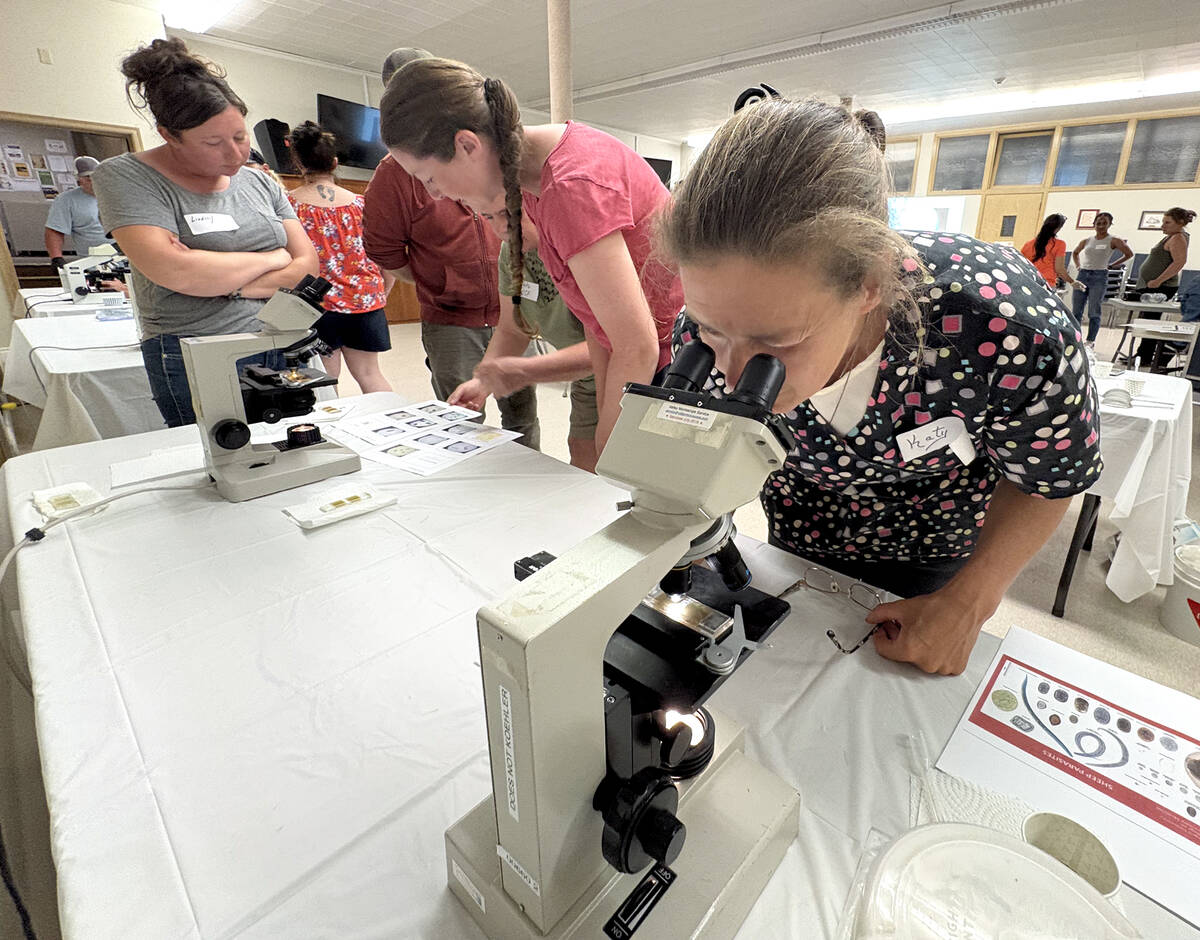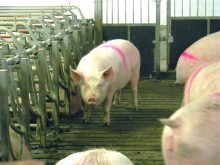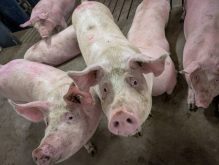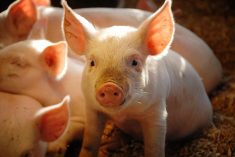Just treating pigs with antibiotics without knowing the cause of the health problem is not only hit and miss, but will delay effective treatment and possibly compromise pig welfare.
Bernie Peet is president of Pork Chain Consulting Ltd. of Lacombe, Alberta, and edi tor of Western Hog Journal. His columns will run every second week in the Manitoba Co-operator.
In my last article, I wrote about the importance of recognizing health problems in pigs as soon as possible in order to minimize the economic losses caused by disease or injury and avoid compromising the pigs’ welfare. Just as important is how to approach the treatment of such pigs and make decisions about if and when to euthanize pigs that fail to respond to treatment.
Read Also

Smart deworming for sheep starts with individual fecal egg counts
Fecal egg count tests are one step to managing dewormer resistance and managing sheep parasites on Canadian sheep farms to maintain flock health.
When an individual pig or a group of pigs is recognized as being sick, injured or disadvantaged in any way, a decision must be made as to the most effective course of action. The eventual decision should be made on the basis of the pigs’ condition and the likely response to various forms of treatment, which may or may not involve medication. A prompt response and good decision-making will give the best possible outcome.
Having first recognized that there is a problem, its extent must be quantified. Is a single pig involved, several pigs or the whole barn? The choice of treatment will be influenced by the number of pigs – for example in an outbreak of respiratory disease the whole barn may require medication. In this situation it will only be possible to remove a small number of the most badly affected pigs to the hospital pens and it will be necessary to prioritize.
DECISIONS ON TREATMENT
In most cases pigs will either be treated in their own pen or removed to a hospital pen for treatment. Therefore, the next stage is to decide which of these options is appropriate, depending on the degree to which the pig is disadvantaged. If staying in their own pen is likely to impede the pig’s chance of recovery, then it should be removed.
Injured or disadvantaged pigs placed in hospital pens should be assessed daily and a decision taken on their treatment. If, at any point, they seem unlikely to recover, they should be sent for casualty slaughter (depending on weight and suitability for transport), slaughtered on the farm for home consumption or euthanized. Pigs that recover may be sent for slaughter or remain in a hospital pen or recovery pen until they are market weight. Ideally, they should not be mixed back into pens with pigs of similar weight, although sometimes this may be unavoidable.
For pigs that are clearly sick, the first question is whether they are suffering from a recognizable problem that has a defined treatment documented in the farm’s treatment protocol. If so, the protocol can then be followed. If not, the farm’s veterinarian should be consulted. Just treating pigs with antibiotics without knowing the cause of the health problem is not only hit and miss, but will delay effective treatment and possibly compromise pig welfare. Based on knowledge of the disease, the condition of the pig and previous experience of that specific problem, an assessment of the chances of recovery can be made. If this concludes that recovery is unlikely, the pig should be euthanized immediately. Where treatment is given, daily assessment of progress should be made and a decision taken as to whether to continue treatment or euthanize the pig.
Daily decisions on what to do with each pig that is being treated or hospitalized are essential in order to minimize suffering and prevent pigs “hanging around” for weeks and even months without recovery, something that I see far too often. While no one who works with pigs wants to kill them unnecessarily, there is often too much
“kindness” shown when, in reality, continuing treatment without seeing a response may be prolonging suffering. Such decision-making will be improved if a record of treatments and daily assessments is maintained and reviewed regularly.
HOSPITAL PENS AID RECOVERY
Dedicated hospital pens are essential for the treatment of disadvantaged pigs and in Europe they are mandatory. Hospital pens should provide a high level of comfort with little competition from other pigs, which will increase the pig’s chance of a speedy recovery. If hospital pens are to be effective, sufficient time must be spent in managing them and providing pigs with individual care.
Depending on the size of pig, enhancement of the environment will be beneficial, for example by providing bedding or a solid floor panel to lie on. For smaller pigs, a heat lamp may also be used for extra comfort. Another important consideration is feed and water provision, which should ensure that all pigs have easy access.
Lame or injured pigs with reduced mobility, making it difficult for them to reach feed and water, should be assisted to feed and drink at least twice per day. Making them get up and move around will also help them to regain their mobility. In order to identify
pigs which cannot move easily, all pigs should be made to stand and move around during inspection.
Finally, all pigs entering the hospital area should ideally be identified with a tag, or if not an indelible spray mark. This allows them to be easily identified for any treatment with medicines while in the hospital pen and be easily recognized as hospitalized and treated pigs if they return to another part of the farm.
Good identification is also essential in order to observe medicine withdrawal times so that treated pigs are not sent to slaughter before their clearance date.


















